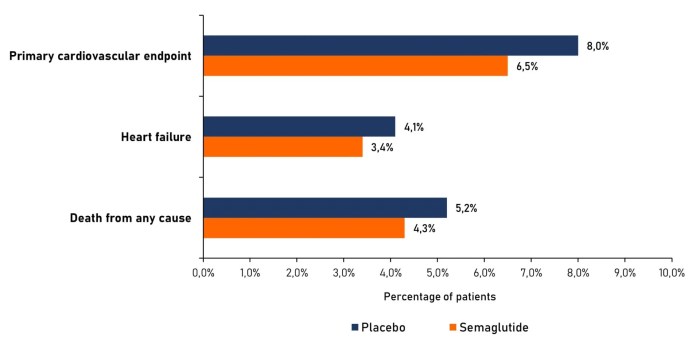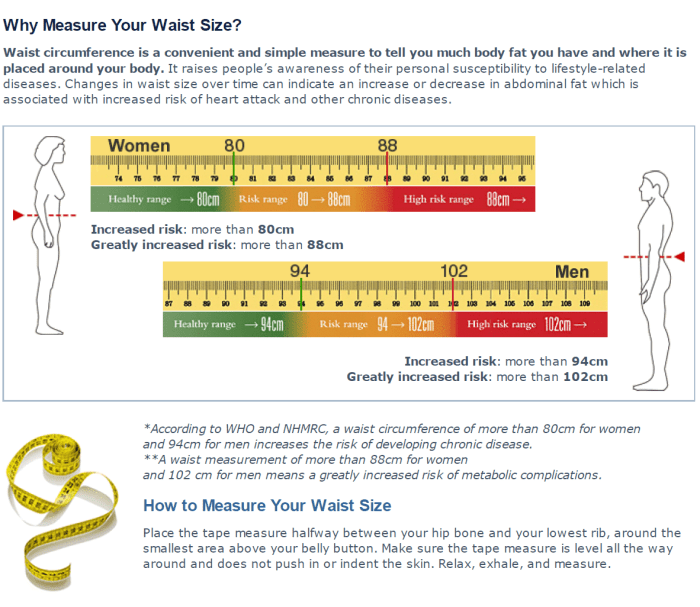Start exercising for obesity treatment is crucial for a healthier lifestyle. This comprehensive guide dives deep into the physiological benefits of exercise for weight management, exploring various exercise types and personalized plans. We’ll uncover how exercise impacts metabolism and calorie expenditure, and how to seamlessly integrate it with a balanced diet. Beyond weight loss, we’ll explore the holistic well-being benefits, including improved cardiovascular health and mental clarity.
This guide will provide a structured approach to effectively incorporate exercise into your life.
We’ll discuss the importance of a personalized exercise plan, considering individual fitness levels, medical history, and personal preferences. The guide will Artikel different exercise types, from cardio and strength training to flexibility exercises, and the crucial role of safety and injury prevention. We’ll also delve into the synergistic relationship between exercise and nutrition, providing practical strategies for combining both for optimal weight management.
Furthermore, the guide will explore the significance of motivation and adherence, providing actionable strategies to maintain motivation and overcome challenges. Medical considerations for individuals with pre-existing conditions will be thoroughly addressed.
Introduction to Exercise for Obesity Treatment
Exercise plays a crucial role in managing and treating obesity. It’s not simply about aesthetics; it’s a fundamental component of a comprehensive weight management strategy, influencing various physiological processes that contribute to a healthier lifestyle. The impact of exercise extends beyond just shedding pounds, encompassing improvements in cardiovascular health, mental well-being, and overall quality of life.Exercise combats obesity by increasing energy expenditure, boosting metabolism, and influencing hormonal factors.
It directly helps to burn calories, a critical factor in weight loss. Furthermore, exercise promotes the building and maintenance of lean muscle mass, which further accelerates metabolism and contributes to long-term weight management success.
Physiological Mechanisms of Exercise in Obesity Treatment
Exercise affects multiple physiological pathways that contribute to weight loss and improved health. Increased energy expenditure during physical activity directly leads to calorie burning. Moreover, regular exercise enhances insulin sensitivity, allowing the body to utilize glucose more effectively, reducing the risk of type 2 diabetes. This also contributes to the regulation of appetite and hormonal balance, leading to more sustainable weight management.
Furthermore, exercise promotes the growth of lean muscle tissue, which elevates resting metabolic rate. This means the body burns more calories even when at rest, contributing to a more efficient calorie-burning system.
Importance of Exercise in Holistic Weight Management
Exercise is an essential part of a comprehensive obesity treatment plan. A holistic approach considers not only weight loss but also overall health and well-being. Combining exercise with a balanced diet and behavioral changes creates a synergistic effect, maximizing the positive impact on weight management and health outcomes. This multi-faceted approach addresses the root causes of obesity, promoting sustainable lifestyle changes rather than just short-term fixes.
For example, a person might lose weight through diet alone, but they could find it difficult to maintain that weight loss without exercise, which strengthens their commitment to a healthier lifestyle.
Potential Benefits Beyond Weight Loss
Exercise offers a multitude of benefits beyond weight reduction. It strengthens the cardiovascular system, reducing the risk of heart disease and stroke. Regular physical activity lowers blood pressure and improves cholesterol levels, crucial factors in maintaining long-term cardiovascular health. Exercise also positively impacts mental well-being, reducing stress, anxiety, and symptoms of depression. The release of endorphins during exercise contributes to a sense of overall well-being and happiness.
Exercise Types for Different Fitness Levels
Choosing the right type of exercise is crucial for success. The following table provides a guideline for various fitness levels:
| Exercise Type |
Description |
Benefits |
Intensity Level |
| Walking |
A low-impact, accessible exercise. |
Improved cardiovascular health, stress reduction, and weight management. |
Beginner |
| Swimming |
A full-body workout with low impact on joints. |
Excellent for cardiovascular health, muscle strengthening, and joint preservation. |
Beginner to Intermediate |
| Cycling |
A moderate-intensity cardiovascular exercise. |
Improved cardiovascular fitness, muscle strengthening, and calorie burning. |
Beginner to Advanced |
| Running |
A high-impact exercise for cardiovascular fitness. |
Improved cardiovascular health, muscle strengthening, and calorie burning. |
Intermediate to Advanced |
| Strength Training |
Exercises using weights or resistance bands. |
Muscle building, increased metabolism, and improved bone density. |
Beginner to Advanced |
Creating a Personalized Exercise Plan
A crucial aspect of successful obesity treatment is tailoring an exercise program to individual needs. Generic approaches often fail to address the unique circumstances of each person, leading to frustration and decreased motivation. A personalized plan acknowledges variations in fitness levels, medical conditions, and personal preferences, fostering a more sustainable and effective path toward weight management.A personalized exercise plan goes beyond simply prescribing a set of exercises.
It’s a dynamic strategy that considers the individual’s current health status, lifestyle, and aspirations. This individualized approach maximizes the likelihood of adherence and positive outcomes.
Getting started with exercise for weight loss can be daunting, but it’s a crucial step. While a healthy diet is also essential, incorporating regular physical activity can significantly impact your journey. For some, managing hormonal fluctuations can be a challenge, and this can sometimes affect weight management. Factors like those related to combination birth control pills might play a role, so understanding your body is key.
Ultimately, consistent exercise remains the best long-term strategy for combating obesity.
Factors to Consider in Personalization
A personalized exercise plan must consider several key factors. These factors include the individual’s current fitness level, medical history, personal preferences, and available resources. Understanding these elements helps to create a safe, effective, and motivating exercise program.
Assessing Individual Needs and Limitations
A thorough assessment is essential for creating a safe and effective personalized plan. This involves a comprehensive evaluation of the individual’s current physical condition, including their medical history, current fitness level, and any existing health concerns. This should also include a discussion of their personal preferences, goals, and lifestyle factors that might impact their ability to engage in exercise.
Consideration should also be given to the availability of resources such as equipment, facilities, and support systems.
Gradual Progression
Gradual progression in exercise intensity and duration is paramount for long-term success and injury prevention.
Rapid increases in exercise load can lead to injuries, demotivation, and even a complete cessation of the program. Starting with manageable levels and gradually increasing the intensity and duration over time is crucial for building endurance and preventing plateaus. This approach allows the body to adapt progressively, leading to sustainable results. For example, someone starting with 10 minutes of brisk walking three times a week could gradually increase the duration to 30 minutes and the frequency to five times a week over several weeks.
Starting an exercise routine for obesity treatment is a great first step, but understanding the intricate network of blood vessels, like the inferior vena cava, is crucial for a holistic approach. Knowing the anatomy of the inferior vena cava, a major vein responsible for returning blood from the lower body back to the heart, inferior vena cava anatomy can help you understand the body’s response to exercise.
This knowledge can then help you tailor your exercise plan to ensure your body functions optimally during your weight loss journey.
Key Components of a Personalized Exercise Plan
| Goal |
Exercise |
Frequency |
Duration |
| Weight loss |
Brisk walking, jogging, cycling |
5-7 days/week |
30-60 minutes |
| Improved cardiovascular health |
Swimming, dancing, brisk walking |
3-5 days/week |
20-45 minutes |
| Increased muscle strength |
Resistance training (using weights or resistance bands) |
2-3 days/week |
20-30 minutes per session |
| Improved flexibility |
Yoga, Pilates, stretching |
2-3 days/week |
15-30 minutes |
Exercise Types and Considerations
Choosing the right exercise is crucial for successful obesity treatment. A well-rounded approach that combines various types of exercise, tailored to individual needs and preferences, is key to long-term weight management and overall health improvement. A personalized exercise plan should account for individual fitness levels, potential injuries, and medical conditions.A comprehensive exercise program for obesity treatment should encompass not only cardio for calorie burning but also strength training to build muscle mass, which in turn boosts metabolism.
Flexibility exercises are also essential for maintaining joint health and preventing injuries. Different exercise modalities have varying impacts, and the optimal approach often involves a combination to maximize effectiveness.
Cardiovascular Exercise
Cardiovascular exercise, or cardio, is essential for burning calories and improving cardiovascular health. It helps to reduce body fat, improve heart function, and enhance endurance. Effective cardio exercises elevate the heart rate and breathing, increasing the body’s metabolic rate.
- Running is a popular cardio exercise that can be performed outdoors or on a treadmill. It’s highly effective for calorie burning and cardiovascular fitness. However, running can put stress on joints, particularly the knees and ankles, so proper form and gradual progression are essential to prevent injuries.
- Swimming is a low-impact cardio exercise that is gentle on joints. It engages a wide range of muscle groups and burns significant calories. Swimming is an excellent option for individuals with joint pain or those seeking a less strenuous cardio activity.
- Cycling is another excellent cardio option, offering a low-impact workout. It can be performed outdoors or on stationary bikes, and it’s adaptable to various fitness levels.
Strength Training
Strength training, often overlooked in weight loss programs, plays a vital role in building muscle mass. Muscle tissue has a higher metabolic rate than fat tissue, meaning that individuals with more muscle burn more calories even at rest. This is crucial for long-term weight management.
- Weightlifting involves using weights or resistance bands to build muscle strength and endurance. Proper form is critical to avoid injuries and maximize results. Weightlifting exercises can be customized to target specific muscle groups.
- Bodyweight exercises utilize the body’s own weight as resistance. These exercises are excellent for building strength and improving body awareness. Bodyweight exercises are often more accessible than weightlifting, especially for beginners.
Flexibility and Stretching
Maintaining flexibility is crucial for preventing injuries and improving joint mobility. Stretching improves range of motion, reduces muscle stiffness, and enhances overall physical performance.
- Yoga is a popular form of stretching that combines physical postures with breathing techniques. It can improve flexibility, balance, and mental well-being. Yoga poses can be modified to suit different fitness levels.
- Static stretching involves holding a stretch for a period of time. This type of stretching can improve flexibility and reduce muscle soreness.
Exercise Safety and Injury Prevention
Prioritizing safety is paramount in any exercise program. Gradual progression, proper warm-up and cool-down routines, and listening to the body are crucial to avoid injuries. Consult with a healthcare professional before starting any new exercise program, especially if you have pre-existing medical conditions.
Getting started with exercise for weight loss can feel daunting, but it’s a crucial part of the journey. It’s important to remember that taking care of your body includes looking after your overall health, including when you’re feeling under the weather. For example, if you have a common cold, common cold self care is essential.
This means prioritizing rest and fluids, which are equally important when you’re committed to an exercise regimen. Ultimately, starting an exercise routine is a marathon, not a sprint, and requires consistent effort, regardless of any temporary health hiccups.
Exercise Modalities Comparison
Different exercise modalities offer varying levels of impact and effectiveness. Running, while highly effective for calorie burning, can be demanding on joints. Swimming, on the other hand, is gentler on joints but may not be as effective for building muscle mass. Cycling provides a low-impact option, suitable for various fitness levels. Weightlifting builds muscle mass and increases metabolism, but requires proper form to prevent injury.
| Exercise Type |
Description |
Benefits |
Precautions |
| Cardio (Running) |
Running at a moderate or high intensity on a track, treadmill, or outdoors. |
Burns calories, improves cardiovascular health, builds endurance. |
Can put stress on joints, requires proper form, gradual progression. |
| Strength Training (Squats) |
Lowering and raising the body using the legs and core muscles. |
Builds muscle mass, increases metabolism, improves bone density. |
Proper form is crucial to avoid injury, may require weights or resistance bands. |
| Flexibility (Yoga) |
Performing various poses to increase flexibility, strength, and balance. |
Improves flexibility, reduces muscle stiffness, enhances body awareness. |
Consult with a qualified instructor, especially for beginners. |
Exercise and Nutrition
Combating obesity requires a multifaceted approach, and exercise and nutrition are intrinsically linked. Effective weight management hinges on understanding how these two pillars interact and work synergistically. A balanced strategy incorporating both dietary choices and consistent physical activity is crucial for long-term success.A holistic approach to weight loss and management recognizes that exercise and nutrition are not separate entities but rather powerful allies.
The interplay between these two factors is profound and impacts various aspects of our bodies, from metabolism to calorie expenditure. Understanding these connections empowers individuals to develop personalized strategies that address their specific needs and goals.
Synergy Between Exercise and Nutrition, Start exercising for obesity treatment
Exercise and nutrition work together to optimize weight management. Exercise increases metabolism, which means the body burns more calories even when at rest. This enhanced metabolic rate supports the body’s ability to process and utilize nutrients effectively. Furthermore, exercise helps to build and maintain muscle mass, which further increases the body’s metabolic rate. In contrast, poor dietary choices can hinder the effectiveness of exercise.
For example, consuming high-calorie, processed foods alongside an exercise routine can negate the positive effects of physical activity.
Impact of Exercise on Metabolism and Calorie Expenditure
Exercise directly impacts the body’s metabolic rate, increasing the number of calories burned both during and after the activity. Aerobic exercises like running or cycling are particularly effective at burning calories. Resistance training, such as weightlifting, builds muscle mass. Muscle tissue burns more calories at rest than fat tissue. Consequently, individuals with higher muscle mass tend to have a higher resting metabolic rate.
This heightened metabolic rate contributes significantly to weight management and overall health.
Influence of Dietary Choices on Exercise Effectiveness
Dietary choices play a crucial role in determining the effectiveness of exercise in weight management. A balanced diet rich in fruits, vegetables, lean proteins, and whole grains provides the body with the necessary nutrients to support physical activity and repair tissues. Conversely, a diet high in processed foods, saturated fats, and sugary drinks can negatively impact exercise performance and hinder weight loss efforts.
For instance, inadequate carbohydrate intake can lead to fatigue during workouts, reducing the effectiveness of the exercise session. Similarly, excessive consumption of unhealthy fats can negatively affect the absorption of nutrients needed for muscle repair and growth.
Combining Exercise with Dietary Modifications for Optimal Weight Management
| Exercise |
Food Choices |
Timing |
Synergistic Benefits |
| 30 minutes of brisk walking, 3-4 times a week |
Focus on fruits, vegetables, lean protein sources like fish or chicken. Limit processed foods and sugary drinks. |
Consume a balanced meal 1-2 hours before the walk. Post-exercise, a light snack containing protein and complex carbohydrates. |
Improved cardiovascular health, reduced blood sugar levels, and enhanced weight loss |
| Strength training (2-3 times a week) |
Prioritize lean protein sources like eggs, beans, or Greek yogurt. Include complex carbohydrates for energy. |
Consume protein-rich meals immediately after strength training to aid muscle recovery and growth. |
Increased muscle mass, boosted metabolism, and improved body composition |
| Cycling (2-3 times a week) |
Prioritize whole grains, fruits, and vegetables. Limit intake of fried foods and refined sugars. |
Have a balanced meal 1-2 hours before the cycling session. Consume a light snack with carbohydrates and protein post-cycling. |
Enhanced cardiovascular health, increased calorie expenditure, and support for overall well-being. |
| Yoga or Pilates (2-3 times a week) |
Prioritize whole foods, especially fruits, vegetables, and lean proteins. |
Consume a nutritious meal at least an hour before the session. Consider a light snack post-session. |
Improved flexibility, stress reduction, and enhanced body awareness. Supports weight management by promoting a healthier lifestyle. |
Exercise and Motivation: Start Exercising For Obesity Treatment
Staying motivated and consistently exercising is crucial for long-term weight management success. Without the dedication to adhere to an exercise routine, even the most meticulously planned plan will fail. Motivation is not a fixed trait but rather a dynamic force that requires nurturing and consistent effort. Understanding the importance of this and learning strategies to overcome obstacles are key components of a successful weight loss journey.
The Importance of Motivation and Adherence
Motivation fuels the commitment to your exercise plan. A strong motivational drive propels you through challenging workouts and helps you stay the course when progress seems slow. Adherence, or the consistency in following your exercise plan, is equally vital. Regular exercise, performed consistently, leads to sustained improvements in physical health, reducing the risk of chronic diseases. Ultimately, this translates to improved quality of life.
Strategies for Maintaining Motivation
Sustaining motivation requires proactive strategies. One crucial element is setting achievable goals. Start with small, manageable steps that you can realistically accomplish. Tracking your progress through a journal or an app can be incredibly motivating. Visualizing your desired outcome, such as fitting into a favorite outfit or feeling more energetic, can also be powerful motivators.
Remember, progress, even small, is progress. Celebrate milestones, no matter how small. Finding an exercise buddy or joining a support group can provide encouragement and accountability.
Overcoming Challenges
Challenges are inevitable. Feeling discouraged, experiencing plateaus, or encountering injuries are common hurdles. When faced with these challenges, remember to adjust your approach. Modify your exercise routine, explore new activities, or simply rest and recover. Don’t be afraid to seek guidance from a healthcare professional or a certified fitness trainer.
Their expertise can provide tailored advice and support. Building resilience and maintaining a positive mindset are essential tools for navigating setbacks.
The Role of Support Systems
A strong support system can be invaluable. Friends, family, and healthcare professionals can offer encouragement, accountability, and understanding. Sharing your goals with loved ones can create a supportive environment, while professionals can provide guidance on proper exercise form and nutrition. Remember, you are not alone in this journey.
Setting Realistic Goals and Celebrating Progress
Setting realistic goals is crucial for long-term success. Unrealistic expectations often lead to disappointment and abandonment of the exercise plan. Start with manageable goals that you can achieve consistently. For example, aiming for 30 minutes of brisk walking three times a week is more attainable than trying to run a marathon immediately. Celebrate every milestone, no matter how small.
A well-deserved treat, a new workout outfit, or simply acknowledging your achievement can reinforce positive behavior.
Techniques for Maintaining Motivation and Overcoming Plateaus
| Strategy |
Description |
Expected Outcome |
Potential Challenges |
| Vary Exercise Routine |
Introduce new exercises or activities to prevent boredom and challenge muscles differently. |
Increased motivation, preventing plateaus, and improved fitness. |
Finding time for new activities, potential initial discomfort with unfamiliar exercises. |
| Set SMART Goals |
Specific, Measurable, Achievable, Relevant, and Time-bound goals help track progress and stay focused. |
Increased motivation and accountability. |
Difficulty defining specific goals, potential for unrealistic goals. |
| Find an Exercise Buddy |
Exercising with a friend or family member provides motivation, support, and accountability. |
Increased motivation, social support, and adherence to the exercise plan. |
Finding a compatible exercise buddy, scheduling conflicts. |
| Reward System |
Rewarding yourself for achieving milestones reinforces positive behavior and motivates continued effort. |
Increased motivation and adherence. |
Difficulty identifying appropriate rewards, potential for overindulgence. |
Exercise and Medical Considerations
Embarking on an exercise program for obesity treatment requires careful consideration of individual health conditions. Understanding potential limitations and tailoring the program accordingly is crucial for both safety and effectiveness. This section delves into the importance of medical guidance and modifications necessary for individuals with pre-existing health issues.Effective exercise programs for obesity treatment are personalized to account for individual health conditions.
Failing to acknowledge and adapt to these conditions can lead to injuries, setbacks, and reduced overall success.
Considerations for Pre-existing Health Conditions
Prioritizing safety and efficacy is paramount when designing exercise programs for individuals with pre-existing health conditions. This includes cardiovascular disease, diabetes, arthritis, and other conditions. Understanding the specific limitations imposed by each condition is essential for crafting a safe and effective exercise plan. Modifications to intensity, duration, and type of exercise are frequently necessary.
Modifications for Individuals with Limitations
Addressing limitations like joint pain, mobility issues, or balance problems requires tailored modifications. For instance, individuals with arthritis might benefit from low-impact exercises like swimming, water aerobics, or stationary cycling. Those with mobility issues could start with shorter durations and gradually increase the time and intensity. Balance-challenging exercises can be modified by incorporating assistive devices or utilizing stable surfaces.
Proper form and technique are critical to prevent exacerbating existing conditions.
Role of Healthcare Professionals
Healthcare professionals, including physicians, physical therapists, and registered dietitians, play a pivotal role in designing safe and effective exercise programs. Their expertise in assessing individual needs, identifying potential risks, and monitoring progress is invaluable. These professionals can provide guidance on appropriate exercise types, intensities, and durations. They can also monitor for any adverse reactions or complications.
Importance of Consulting a Doctor Before Starting an Exercise Program
Before commencing any exercise program, consulting a physician is paramount. This consultation allows for a comprehensive assessment of overall health, identification of any underlying conditions, and evaluation of suitability for exercise. A doctor can determine appropriate exercise types, intensities, and safety precautions. This crucial step can prevent potential health risks and maximize the benefits of the program.
Comparison of Exercise Programs for Different Medical Conditions
| Condition |
Modifications |
Recommended Exercises |
Precautions |
| Arthritis |
Low-impact, range-of-motion exercises, avoiding high-impact activities |
Swimming, water aerobics, stationary cycling, walking |
Listen to joint pain; avoid exercises that exacerbate pain |
| Cardiovascular Disease |
Gradual progression of intensity and duration, resting when needed |
Walking, cycling, swimming, low-impact aerobics |
Monitor heart rate; stop if chest pain or discomfort occurs |
| Diabetes |
Maintaining stable blood sugar levels before, during, and after exercise, adjusting insulin doses as needed |
Walking, swimming, cycling, strength training |
Check blood glucose levels; adjust medication as needed; consume appropriate carbohydrates after exercise |
| Obesity with high blood pressure |
Starting with lower intensity, shorter durations, and gradually increasing |
Walking, swimming, stationary cycling, strength training |
Monitor blood pressure; stop if readings are too high |
Measuring Progress and Monitoring Exercise
Staying motivated and seeing results are crucial for long-term success in any weight management journey. Regularly tracking your progress helps you identify areas where you’re excelling and areas that need adjustments. This knowledge is essential for fine-tuning your exercise plan and fostering a sustainable approach to weight loss.Understanding how to monitor your exercise progress, evaluate its effectiveness, and adapt your plan accordingly is paramount for sustainable weight management.
This involves using various tools and methods to track your workouts, analyze their impact, and make necessary changes to your routine.
Tracking Exercise Progress
Regular monitoring of your exercise routine provides valuable insights into your physical performance and helps you stay accountable. This allows for modifications to the exercise plan as needed, improving its effectiveness and ensuring adherence to the weight management goals.
- Heart Rate Monitoring: Tracking your heart rate during exercise helps gauge the intensity of your workouts. A heart rate monitor can provide real-time feedback on your exertion level, allowing you to adjust the intensity or duration of your workouts to match your fitness level. A higher heart rate during a workout indicates higher intensity. Monitoring your heart rate allows you to understand your fitness level and to work within safe and effective ranges.
- Fitness Trackers: Fitness trackers, such as smartwatches or dedicated devices, provide comprehensive data on your exercise activities. They record metrics like steps taken, distance covered, calories burned, and workout duration. These devices can be invaluable for assessing your overall activity level and tracking your progress over time. They also offer features like automated workout tracking, making the process even easier and more convenient.
- Exercise Logs: Maintaining a detailed exercise log is another effective method for monitoring progress. Writing down the type of exercise, duration, intensity, and any notable feelings or observations during your workout allows for a personalized record of your progress. It helps you identify patterns in your exercise routine, allowing for adjustments and improvements in the plan.
Evaluating Exercise Plan Effectiveness
Evaluating the effectiveness of your exercise plan involves a multifaceted approach. This includes not only physical measurements but also considering how your workouts impact your daily life and overall well-being. Assessing the impact on energy levels, mood, and sleep quality alongside physical progress is essential for a comprehensive evaluation.
- Weight Measurement: Regular weight measurements, ideally taken on the same day and time each week, are crucial. Consistency in measurement technique is essential for accurate tracking. This allows for observation of trends in weight change over time. Changes in weight are only one component of the evaluation.
- Body Composition Analysis: Tools like DEXA scans or bioelectrical impedance analysis (BIA) can provide a more comprehensive understanding of body composition, measuring the proportion of fat, muscle, and bone mass. This provides insights into how your exercise plan is affecting your body composition beyond simple weight changes. This detailed evaluation is important for understanding the holistic impact of the exercise regime.
- Self-Assessment: Evaluating your own experiences is important. Consider your energy levels, mood, and sleep quality in relation to your exercise schedule. Are you experiencing improvements in these areas? A personal evaluation provides additional insight into the exercise plan’s effectiveness. This self-assessment allows for adjustments in the plan, focusing on how it affects daily life and overall well-being.
Adjusting the Exercise Plan
Adjusting your exercise plan based on your progress and feedback is crucial for maintaining motivation and maximizing results. This includes modifying intensity, duration, and types of exercises to accommodate your changing fitness level and preferences.
| Method |
Description |
Benefits |
Limitations |
| Heart Rate Monitoring |
Tracking heart rate during exercise |
Provides real-time feedback on exertion level, enabling adjustments to intensity and duration. |
Requires a heart rate monitor; accuracy depends on proper calibration. |
| Fitness Trackers |
Using devices to record activity data |
Comprehensive data on steps, distance, calories burned, and workouts. |
Accuracy can vary depending on the device and user; data interpretation requires understanding the specific metrics. |
| Exercise Logs |
Detailed records of workouts |
Personalizes progress tracking; allows identification of patterns and trends. |
Requires consistent effort in recording details; may not provide quantitative data. |
| Weight Measurement |
Regular weight measurements |
Tracks overall weight change over time. |
Does not provide information on body composition; accuracy depends on consistent technique. |
| Body Composition Analysis |
Using tools to measure body composition |
Provides insights into fat, muscle, and bone mass. |
Can be more expensive than other methods; may not be readily available in all locations. |
| Self-Assessment |
Evaluating personal experiences |
Provides insight into the overall impact on daily life. |
Subjective and may not always correlate with objective measurements. |
Last Word
In conclusion, starting an exercise program for obesity treatment is a journey toward a healthier, more fulfilling life. This guide provides a roadmap to create a personalized exercise plan, considering individual needs and medical conditions. It emphasizes the importance of combining exercise with a balanced diet, maintaining motivation, and prioritizing safety. Remember, consistency and gradual progression are key to long-term success.
Consult your healthcare professional before beginning any new exercise program.












